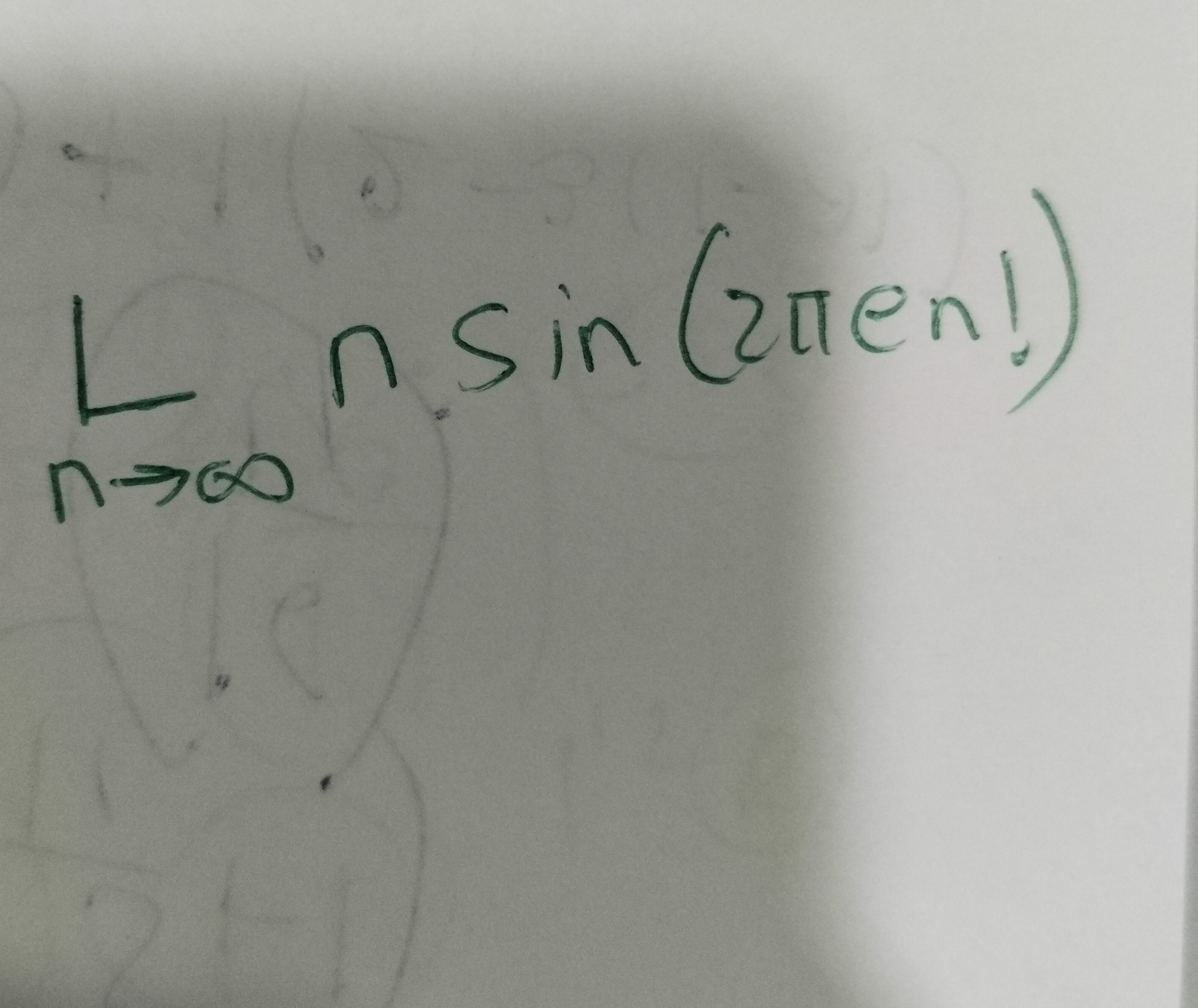Question
Question: $\lim_{n \to \infty} n \sin(2\pi e n!)$...
limn→∞nsin(2πen!)

2\pi
Solution
The limit can be evaluated by using the Taylor series expansion of e. We know that e=∑k=0∞k!1. Multiplying by n!, we get e⋅n!=n!∑k=0∞k!1=∑k=0∞k!n!. We can split this sum into an integer part In=∑k=0nk!n! and a remainder part Rn=∑k=n+1∞k!n!. So, e⋅n!=In+Rn. For n≥1, In is an integer. The remainder term Rn can be written as: Rn=(n+1)!n!+(n+2)!n!+⋯=n+11+(n+1)(n+2)1+… We can bound Rn for n≥1: 0<Rn<n+11+(n+1)21+(n+1)31+⋯=1−n+11n+11=n1. As n→∞, Rn→0 by the Squeeze Theorem.
Now consider the sine term: sin(2πen!)=sin(2π(In+Rn))=sin(2πIn+2πRn). Since In is an integer, sin(2πIn+2πRn)=sin(2πRn).
The limit becomes: L=limn→∞nsin(2πRn). As n→∞, Rn→0, so we can use the limit limx→0xsinx=1. L=limn→∞n(2πRn⋅2πRnsin(2πRn))=2πlimn→∞(nRn)⋅limn→∞2πRnsin(2πRn). Since limn→∞2πRnsin(2πRn)=1, we have L=2πlimn→∞nRn.
Now we evaluate limn→∞nRn: nRn=n(n+11+(n+1)(n+2)1+…)=n+1n+(n+1)(n+2)n+… The first term n+1n→1 as n→∞. The sum of the remaining terms can be bounded: 0<(n+1)(n+2)n+(n+1)(n+2)(n+3)n+⋯<(n+1)2n+(n+1)3n+⋯=1−n+11(n+1)2n=(n+1)2n⋅nn+1=n+11. As n→∞, this sum tends to 0. Thus, limn→∞nRn=1.
Finally, L=2π×1=2π.
